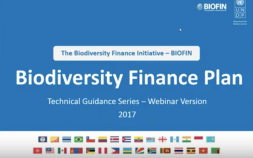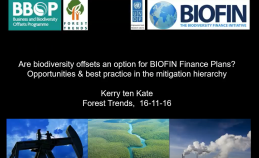
Due to its wealth of biodiversity, Viet Nam has been acknowledged as one of the most prioritized countries for global conservation, which has been reflected in its three main values: maintaining ecological functions (environmental protection), delivering economic supplies (direct use), and providing for socio-cultural engagement (Ministry of Natural Resources and Environment, 2008).
A number of Protected Areas (PAs) in Viet Nam today are globally and regionally recognized, including 8 Ramsar sites, 9 World Biosphere Reserves, 2 World Natural Heritage Sites, 1 World Cultural and Natural Heritage Site, and 5 ASEAN Heritage Parks. Furthermore, there are currently 63 Important Bird and Biodiversity Areas (IBAs) in Viet Nam.
In Viet Nam, biodiversity brings direct and indirect benefits to humans, contributing substantially to the national economy, especially for sectors such as agriculture, forestry, and fisheries; ensuring food security; maintaining genetic resources for farming animals and crops; and providing construction materials, pharmaceutical materials, and food. In addition, ecosystems play an important role in climate regulation and environmental protection. Biodiversity has also been a cultural and artistic inspiration to humanity for millennia (MoNRE, 2013).
According to the Policy and Institutional Review (PIR) (UNDP, 2018), economically, biodiversity contributes directly or indirectly to many sectors, households, and firms. In the agricultural sector,3 about 20 million people rely on fisheries, exploiting more than 300 marine species and more than 50 species of economically valuable freshwater fish, while 25 million people living in or near the forests earn 20-50% of their income from harvesting non-timber forest products (NTFPs), including medicinal plants and rubber. As such, there is a great reliance on products and services provided by biodiversity and ecosystems.
As also stated in the PIR Report, the beautiful biodiversity and terrestrial and coastal landscapes and islands are the foundation for Viet Nam's rapidly expanding tourism industry. Ecotourism is becoming more popular in Nature Reserves (NRs), encouraging education on natural protection and benefiting local people who provide tourism services. About 70% of Viet Nam's rapid tourism growth is occurring in coastal areas and areas with natural ecosystems characterized by high biodiversity. From 2010 to 2016, domestic tourists increased from 28 million to 62 million, and foreign tourists increased from 5 to 10 million. Tourists spend between VND 96,000 billion and VND 400,000 billion. It is estimated that high biodiversity value areas, including National Parks (NPs), PAs, and Landscape PAs, attract 40%-60% of tourists and have earned 20% of their spending.



